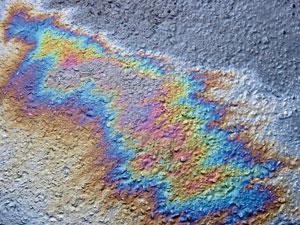ACS Fall 2009, Washington, DC, US
Bibiana Campos-Seijo/Washington, DC, US
Cleaning oily surfaces without the aid of detergents is a difficult, if not impossible, chore. In the future, however, such surfaces may be simply rinsed clean with water, thanks to a new coating material developed by US scientists.
Jeffrey Youngblood and coworkers at Purdue University, West Lafayette, have created a series of polymer coatings that repel oily compounds but are wetting towards water. This property allows any oily substance that has deposited on the coating surface to be easily cleaned with water - therefore eliminating the need for detergents, say the team.
Youngblood is keen to explain the uniqueness of this research: ’Other groups are working on [similar surfaces] but in most cases their research is based on the concept of superhydrophobicity and the lotus effect.’ However, while the superhydrophobicity principle works well for washing particulates off a surface, oily dirt has proven very challenging. Building on their previous research focusing on laborious and expensive chemical treatment of the surface,1 Youngblood and colleagues are now developing polymer coatings from which oil can be easily rinsed off.

At the American Chemical Society’s Fall meeting in Washington, DC, Youngblood introduced a new polymeric material based on perfluorinated end-cap polyethylene glycol amphiphilic macromers that had been polymerised with a variety of comonomers - including styrene, vinyl pyridine, acrylic acid - to form what he calls eco-friendly polymers.
Going green
’We do not claim that [the surfaces] themselves are "green",’ explains Youngblood. ’Some may think they are not as they contain a small Teflon-like molecule. However, surfaces coated with these things do not need soap, detergent or the variety of other things that go along with them to clean - just water. Over the whole lifecycle, the small amount of our polymer that degrades into the environment is far outweighed by the savings in cleaning agents.’
Youngblood says that this surface works because of the different interactions between the fluorinated polymer and the different liquids. When hexadecane (oil) ’sees’ the oleophobic perfluorinated end of the polymer, it beads up, he explains. Whereas the water ’sees’ the hydrophilic polyethylene glycol end, and therefore wets the material. The ratio of comonomers added during the synthesis of the polymer is varied to suit different situations.
Moving forward
So what’s next for Youngblood and his team? ’Currently we are mainly [putting the coatings on] inorganics, mostly glass because it is a standard substrate, but one area we are really interested in going into is plastic substrates.’
The team will also be looking to use the technology in consumer products such as anti-fog products and easy-to-clean paints.
Christopher Stafford, a polymer chemist at the National institute of standards and technology, Washington, DC, is supportive of Youngblood’s research, and sees many potential applications: ’This technology could find use in high-tech applications such as optics and mirrors, but could also have practical implications in consumer products such as coatings for your garage or even textiles.
’Another promising application that I envision would be coatings for industrial floors or equipment,’ Stafford adds. Using his copolymer, one could simply wash away the oil and grease by spraying with water and collecting the effluent in a holding tank, then use the same copolymer in a membrane to separate the dirt and grime from the water. This type of water reclamation technology is pivotal as the society deals with the global issue of clean water availability.’
References
1 J A Howarter and J P Youngblood, J. Colloid Interface Sci., 2009, 329, 127 (DOI: 10.1016/j.jcis.2008.09.068)






No comments yet